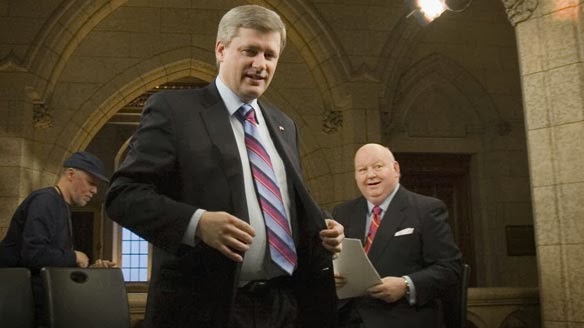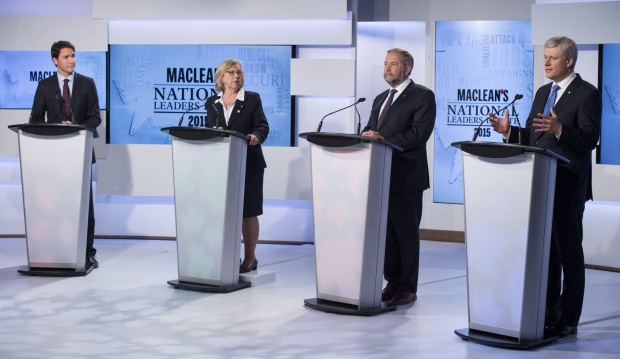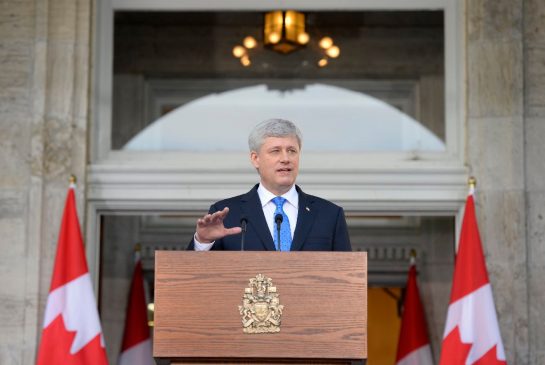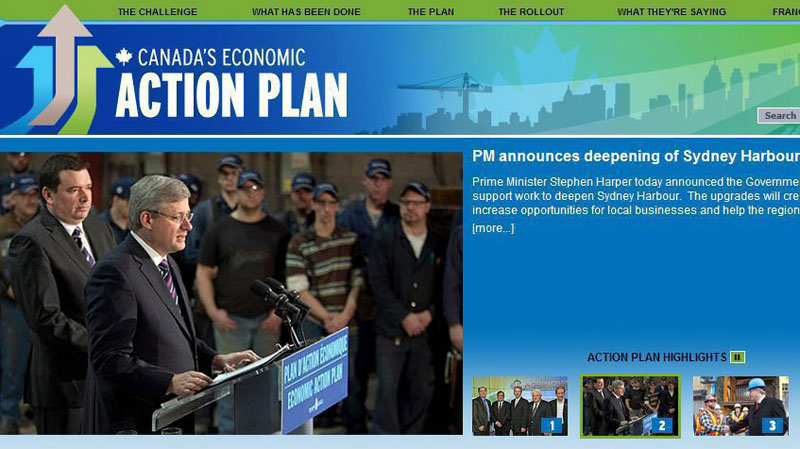
Ministers want Action Plan Signs to be Permanent
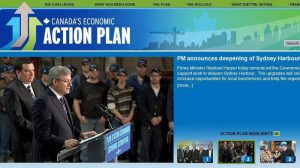
The Action Plan signs that act to promote federal stimulus projects are popular with Conservative cabinet ministers. The signs are so popular that some ministers want the signs to stick around permanently.
The Canadian Press obtained documents that reveal a formal recommendation for a “permanent signage” program went to PM Harper at the request of his ministers last December 17.
The opening line of the 12-page memo to the Prime Minister read, “Interest has been expressed by Ministers in the placement of permanent signage at selected, completed Economic Action Plan (EAP) project sites.”
“If you agree, we will work with departments and your Office to ensure implementation of the guidelines.”
A Spokesman from the Prime Minister’s Privy Council Office – the bureaucracy that serves the Prime Minister – said that the recommendation set out by the memo was rejected.
However, PCO spokesman Raymond Rivet said in an email, “Any permanent signage is a decision of individual departments and agencies,” which suggests that the idea may not necessarily be dead.
An annex that was attached to the original memo said that Infrastructure Canada has already set up guidelines stating that, “Permanent plaques are usually appropriate for any new building which provides public access.”
“Plaques recognizing major renovations, especially that reflect new uses, are also appropriate.”
The Privy Council co-ordinated a weekly tracking exercise that counted each of the 8500-plus temporary “Economic Action Plan” signs that were installed over the last two years and reported the totals directly to Harper.
Critics cited the sign-counting and tracking exercise as evidence that the Conservatives were more concerned with propaganda than job creation.
Infrastructure Canada said of the 4000 projects that are funded through the stimulus find, 50 have a plaque along with 10 projects from the Building Canada Fund.
The annex in the memo states that at Industry Canada, the “Minister (Tony Clement) chose not to participate in permanent signage.”
“Very few requests” for permanent signage were initiated in western Canada under the Recreational Infrastructure Canada (RinC) program that provided funds for renovations for arenas.
The same program in Ontario states “recipient should not be required to install plaques at RinC/Ontario REC project sites.” The Atlantic Canada Opportunities Agency gave “no consideration” to permanent signage at its RinC projects.
Canada’s Economic Action Plan was the name given to the Conservative’s 2009 budget that sent the country into a deep deficit to fund a two-year public infrastructure spending spree to try to fight the recession.
The plan was supposed to have retired but the branding exercise was so successful that Harper touts all future budgets to be “the next phase of Canada’s Economic Action Plan.”
Announcing and re-announcing the stimulus projects provided plenty of positive media spin for the Conservative MPs and candidates.
Leading to the fall of its minority government, the Conservatives spend $26-million in taxpayer-funded ads to promote its Action Plan that would have never happened if the opposition didn’t force it into a corner. It is also worthy to note that criticisms have been raised pertaining to the Government’s ability to get their signs and ads out faster than the promised money.
The election campaign that finished on May 2 featured Conservative candidates preaching about their economic stewardship while warning that the recovery was fragile – the central line from their taxpayer-funded ad campaign that was featured on TV. The election is now over, and the eureka surplus has disappeared, along with the one that was promised in their platform.

